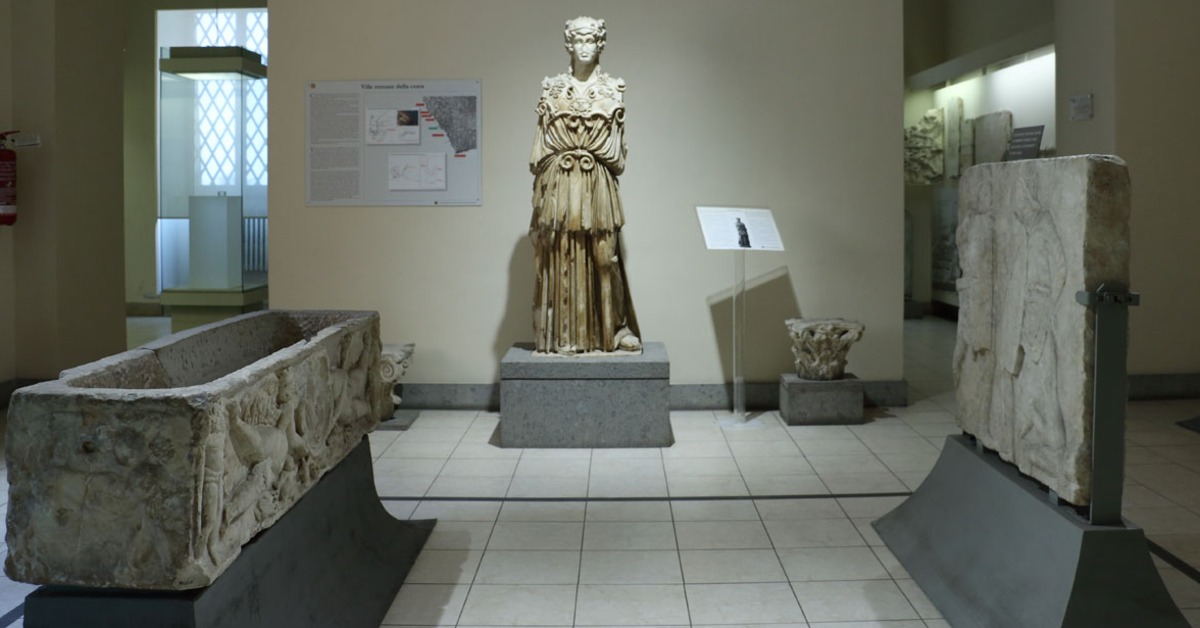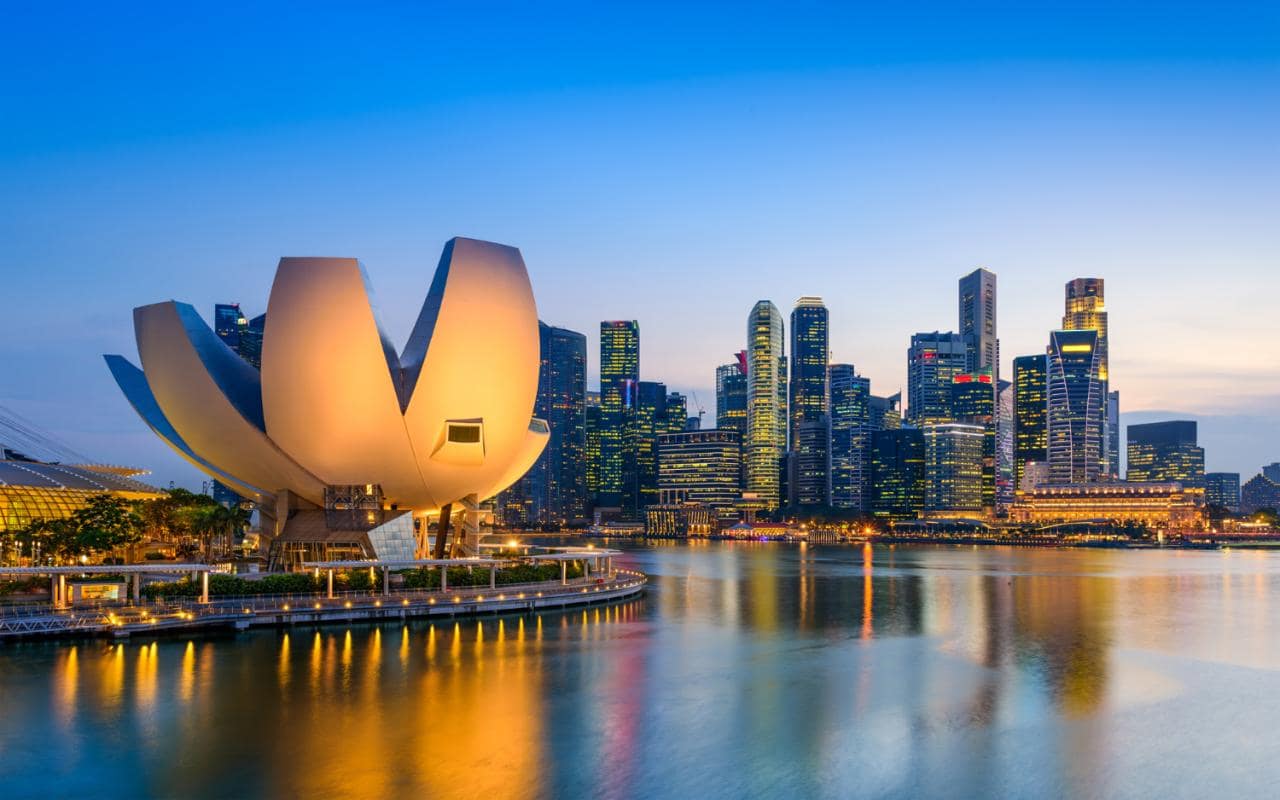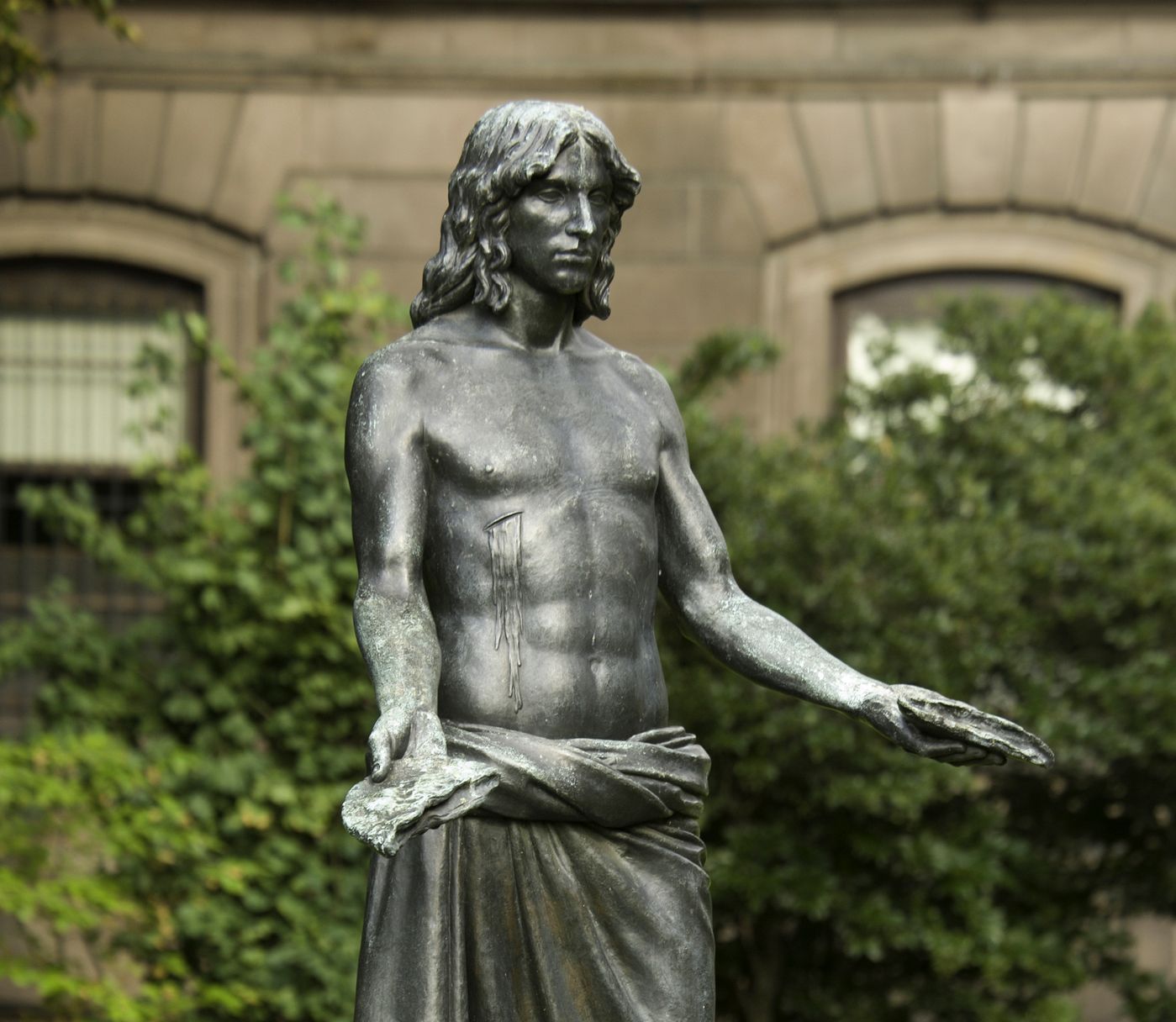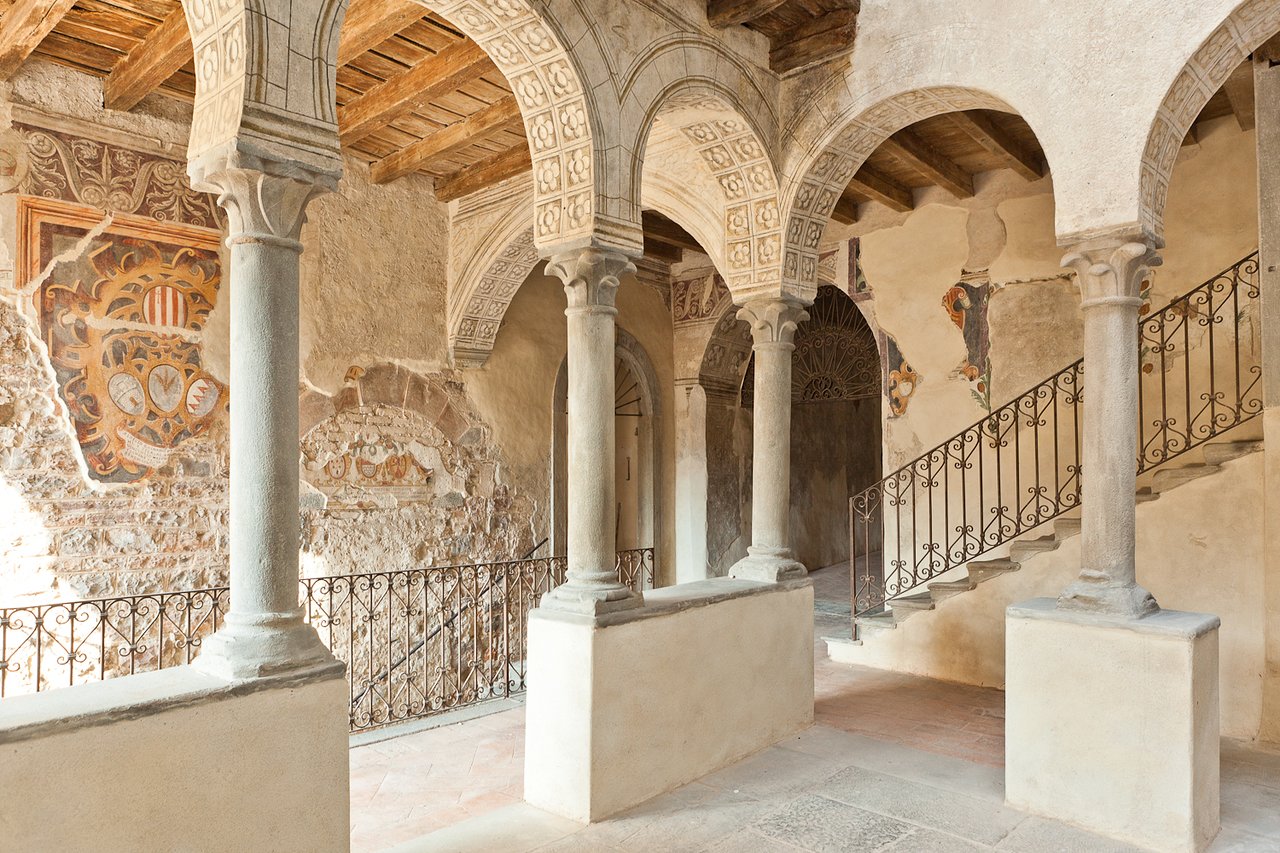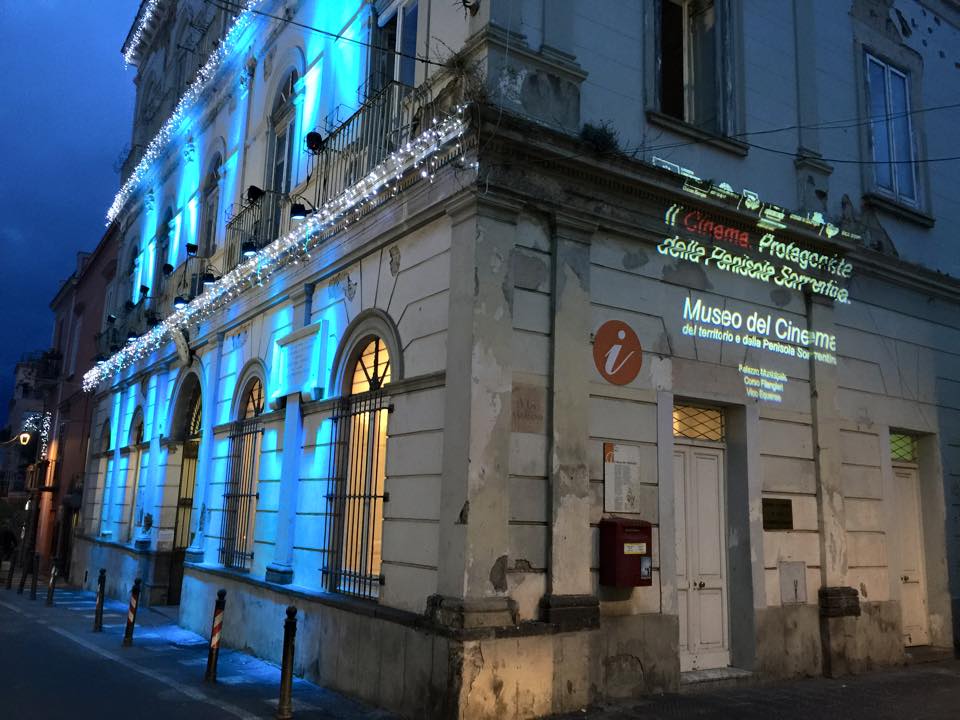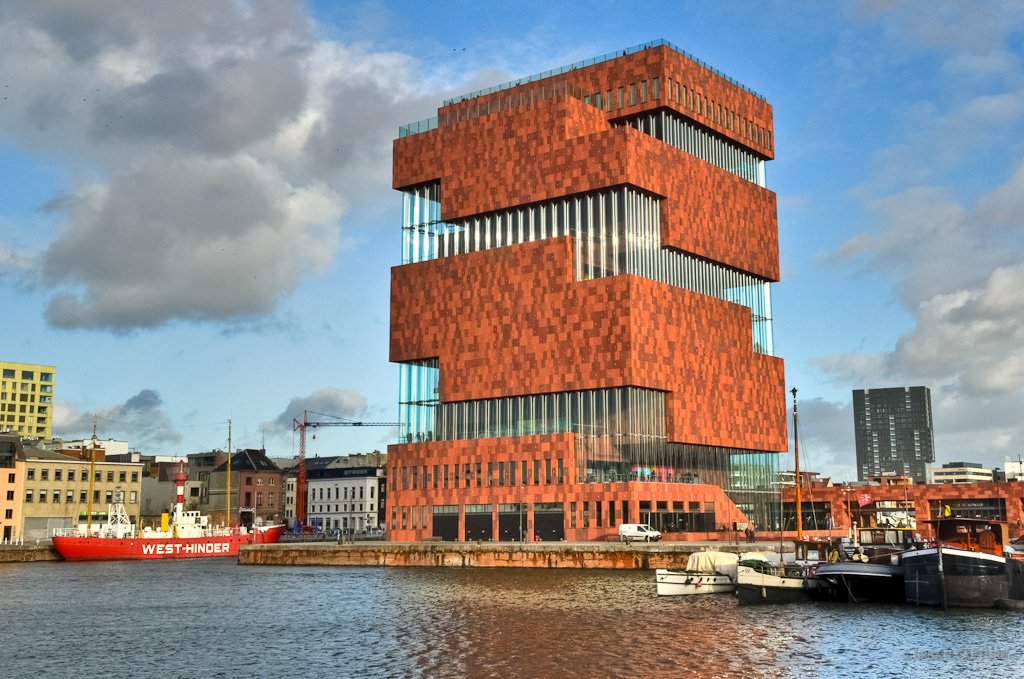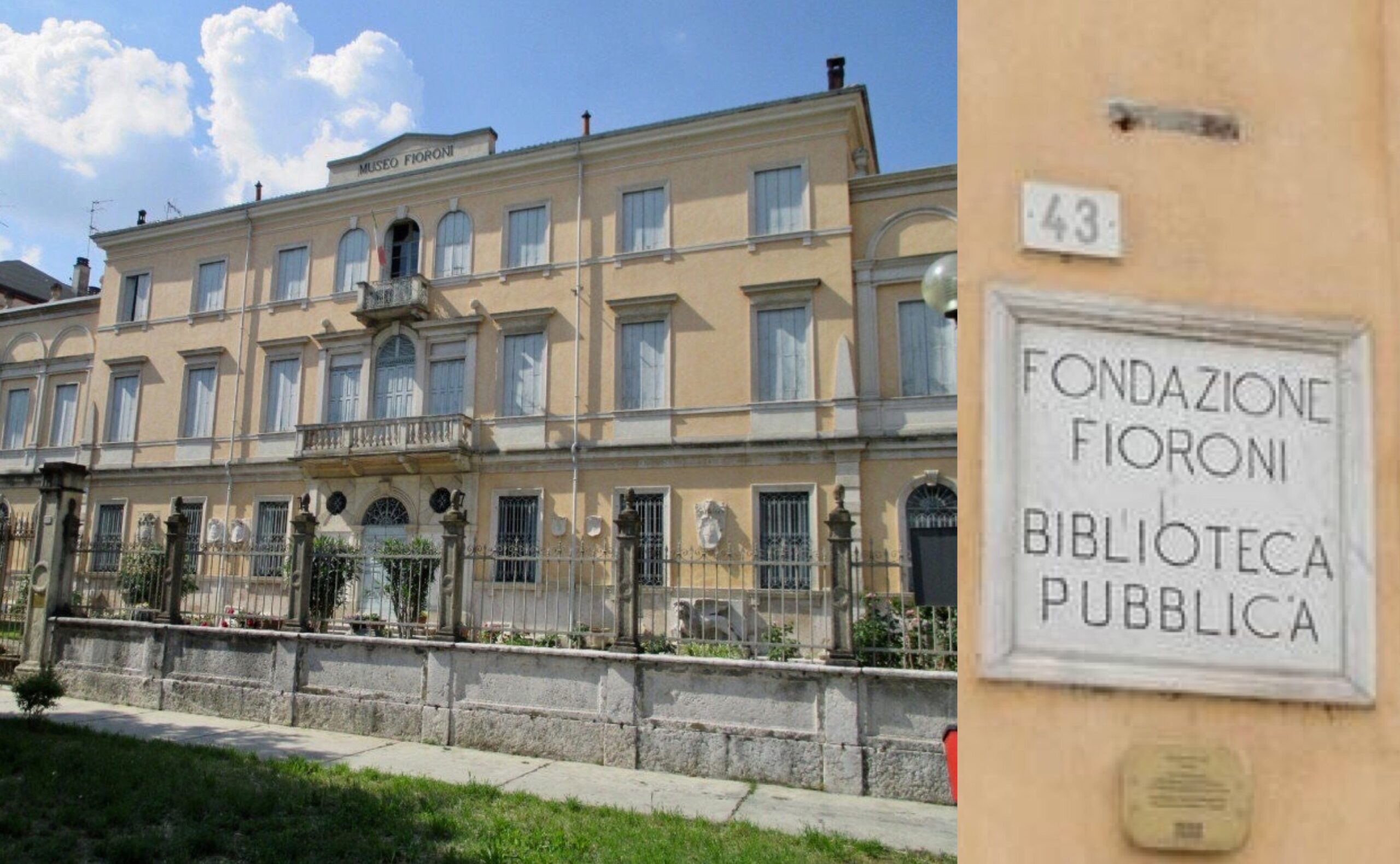The National Archaeological Museum of Civitavecchia, is located inside the eighteenth-century building built by Pope Clement XIII in the eighteenth century, a few steps from Forte Michelangelo.
The museum preserves the main historical and archaeological evidence of the city founded by Emperor Trajan, with the function of the port of Rome, a role that is still played today, and contains artifacts from the territory, both from the coastal sites, both from the Tolfa Mountains.
On the ground floor, among the most interesting finds, you can admire a statue of the god Apollo (I century A.D.), found during excavations in Villa Simonetti in Santa Marinella, the ancient summer residence of the Roman jurist Eneo Domizio Ulpiano. It is most likely a reproduction of the Colossus of Rhodes.
Of particular importance is also a reproduction of the Athena Parthenos by Phidias dating back to the middle of the II century A.D. and some marble heads, among which one depicting the emperor Marcus Aurelius as a young man.
n addition to the magnificent Roman epigraphs of the Imperial Fleet, there is also the Epigraphic Room on the ground floor, which houses two new precious finds: a nymph’s head from the Hadrianic period found near the Taurine Baths and a figurehead with a female bust in solid bronze from the Roman period, found in the mid-19th century in the port, donated by the then Prince D’Ardia to the National Museum.
On the first floor of the museum, in the showcases of the gallery, you can admire a selection of ceramics, bronzes together with some examples of buccheri from the main settlements in the area: Castellina del Marangone with its Etruscan necropolis (Marangone and Volpelle) and Aquae Tauri with the Etruscan necropolis of Pisciarelli.
In particular a chalice decorated with an impression (VII century B.C.), a splendid balsam bowl with a female figure kneeling in front of another one (of Egyptian inspiration and origin, VI century B.C.), and some black painted ceramic vases (IV century B.C.). Also not to be missed are some metal artefacts with a bronze ring and a gold earring of exquisite refinement.
In the room at the back, in the original layout of the 1970s by the architect Minissi, there are finds from the Etruscan sanctuary of Punta della Vipera and from the important village of Luni on the Mignone, with pottery from the Apennine culture and rare Mycenaean pottery.
In the remaining showcases are a series of precious objects from the Museum’s collections, displayed according to a chronological criterion that covers the entire cycle of Etruscan culture. The exhibition closes with material from the Terme Taurine and the proto-Villanovan necropolis of La Pozza (Allumiere).
